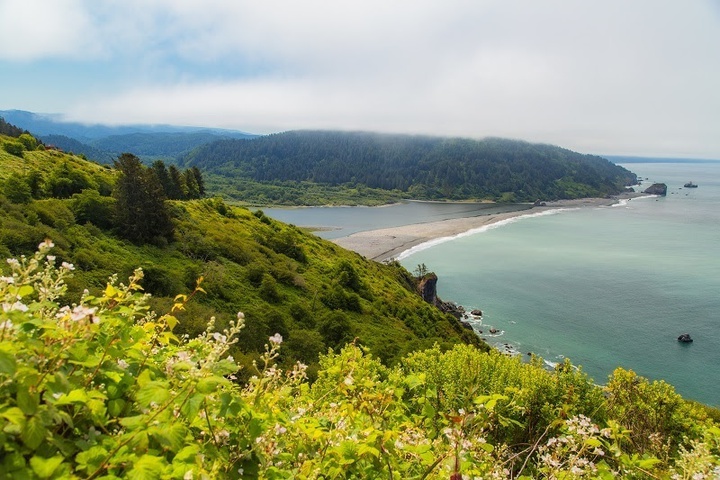Jessica Cejnar Andrews / Thursday, Aug. 29, 2024 @ 5:26 p.m.
CDFW Releases Blueprint to Reintroduce Salmon, Steelhead, Lamprey to Undammed Klamath River

The mouth of the newly undammed Klamath River. | Photo courtesy of the California Department of Fish and Wildlife
From the California Department of Fish and Wildlife:
The California Department of Fish and Wildlife (CDFW) has released the “Klamath River Anadromous Fishery Reintroduction and Restoration Monitoring Plan,” a 60-page blueprint to guide the reintroduction and monitoring of Chinook salmon, coho salmon, steelhead and Pacific lamprey in a newly undammed Klamath River.
The plan’s principal goal is to reestablish viable, wild, self-sustaining populations for species conservation, ecological benefits and to enhance Tribal, commercial and recreational fisheries.
The primary strategy is to allow these ocean-going fish species to naturally recolonize some 420 miles of newly accessible spawning and rearing habitat. The last two remaining barriers – cofferdams at the former Iron Gate and Copco No. 1 dam footprints – were breached this week, returning the Klamath River to a free-flowing state in California for the first time in a century.
“The largest dam removal project in American history is part of something even bigger as we work with countless partners to achieve the largest river restoration project in American history, which is a super exciting space to be in,” said CDFW Director Charlton H. Bonham. “Nature teaches us time and time again just how resilient she is. If we can mostly stay out of the way, these fish populations will heal themselves, sustain themselves and help heal and sustain the communities that cherish them. There is no bigger game-changer underway for Pacific salmon in the West than this effort.”
The Klamath River anadromous fishery plan was prepared in collaboration with Native American Tribes, the State of Oregon and federal partners, including NOAA Fisheries and the U.S. Fish and Wildlife Service.
Beyond the newly available habitat within the main stem of the Klamath River, anadromous fish species also have access to several important tributaries upstream of the Iron Gate Dam footprint that historically supported these fish through several critical life stages and will provide reliable sources of cool water in warmer months and in warming climate conditions.These tributaries include Scotch, Camp, Jenny, Shovel and Fall creeks.
Fall Creek will play a significant role in the restoration of the Klamath River. The creek is home to the newly constructed, $35 million Fall Creek Fish Hatchery intended to jump-start salmon populations in the upper basin.
The Fall Creek Fish Hatchery replaces CDFW’s Iron Gate Fish Hatchery. It was built by PacifiCorp, the former owner and operator of the hydroelectric facilities on the Klamath River. PacifiCorp is slated to fund hatchery operations for the next eight years. Annual production goals consist of 3.25 million fall-run Chinook salmon and 75,000 coho salmon.
The Klamath River Anadromous Fishery Reintroduction and Restoration Monitoring Plan calls for an “adaptive management approach,” which means future management decisions and strategies can change based on extensive monitoring detailed in the plan and coordination with Klamath Basin fisheries partners.
CLICK TO MANAGE